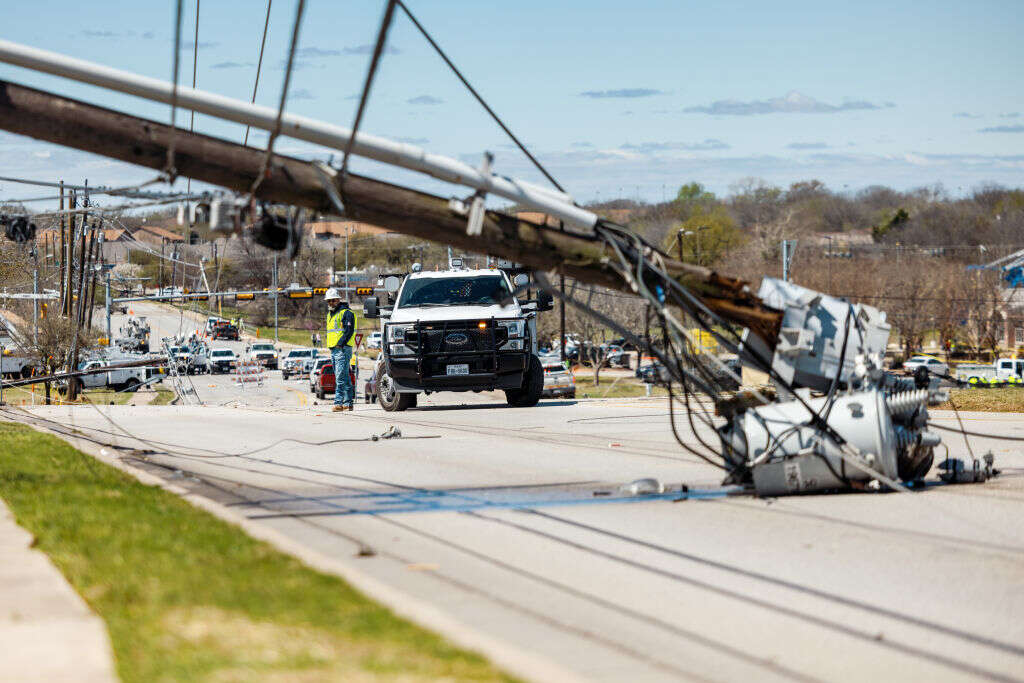Sage and FDM Group ‘most exposed’ to climate risk
[ad_1]
UK-based technology companies including accounting software provider Sage and IT recruitment agency and consultancy FDM Group are at risk of disruption from extreme weather events, according to data from the Cross Dependency Initiative (XDI), which tracks businesses’ exposure to physical climate risks. The data highlights the growing threat to business continuity from climate change as global temperatures rise.

XDI analysed 12 UK-based technology companies listed on the London Stock Exchange to identify what percentage of their physical assets, such as offices and data centres, are located in areas at high risk of extreme weather events. A high risk score indicates an area with substantial exposure to severely damaging hazards such as flooding.
It found that 7.4% of Sage’s assets are in high-risk areas, the highest among the 12 companies. Assuming there are no significant policy interventions to mitigate the effects of climate change, this figure will increase to 8% in 2050 and 13% in 2100.
In its latest sustainability report, Sage says it started to “consider climate-related risks as part of our group risk management policy and framework” in 2021. “Management teams across Sage functions are responsible for identifying, assessing, and managing different types of climate-related risks within their respective areas of responsibility,” it says. “For example, climate risks associated with cloud hosting are considered by Sage’s product team, whereas physical risks to the built environment resulting from extreme weather are considered by Sage’s property team.” Sage did not respond to a request for comment.
In second place is FDM Group, which trains new starters in IT careers before hiring them out as consultants. XDI’s analysis shows that as of 2020, 5% of the company’s assets were exposed to physical climate risk, which increases to 6% and 9% in 2050 and 2100 respectively.
Companies such as FDM Group that have a globally dispersed workforce are subject to climate risk not only from their own assets but also the infrastructure their workers rely on, such as transport, water and power supply, says Rohan Hamden, CEO of XDI.
Content from our partners



A spokesperson for FDM Group told Tech Monitor that its board has “concluded the risk is low in the short and medium term and it does not therefore form part of the group’s principal risks”.
However, the company is “conscious” that some of its current leased office locations are in cities vulnerable to the longer-term risk of rising sea levels and higher-frequency extreme weather, they added. “We are aware that our clients in some sectors could be adversely affected by future climate change and there is a risk that this affects our own business indirectly if clients’ spending decisions are constrained by challenges associated with climate change,” the spokesperson said. “We mitigate this risk by diversifying the sectors and geographies in which we operate.”
They added that the FDM Group considers these factors when deciding on leased premises and “have been committed to considering the carbon footprint of premises when opening new locations”.
Climate risk and business continuity
The threat to business continuity from extreme weather events is already evident. Late last year, Storm Arwen wreaked havoc on the UK’s electricity and power lines, leaving some without broadband services for almost two months. In France, millions of websites were disrupted last year after a large fire broke out at one of OVHCloud’s data centres. In 2020, a tornado wiped out a Nashville-based company’s critical IT infrastructure, including one of its data centres.
These incidents are occurring at greater frequency than current climate models would predict, says Hamden. That means the exposure of the 12 companies could be greater than anticipated. “What’s happening now is 30 or 40 years ahead of what is reasonably probabilistic within the extreme models, so you really want to be thinking about these things now,” he says.
Nevertheless, a sizeable minority of technology services providers have yet to identify their exposure to climate risks. A 2021 survey by the Uptime Institute found that a third of data centre operators had not yet formally assessed the vulnerability of their infrastructure to the effects of climate change.
They may soon be required to. In September last year, the Institutional Investors Group on Climate Change, which represents more than 50 global investors with $10trn in collective assets, set out its expectations for companies to plan for multiple climate scenarios. This includes conducting physical climate risk assessments and developing strategies for building climate resilience.
Read more: Managing megarisks and their impact on technology: Lessons from Covid-19
[ad_2]
Source link





